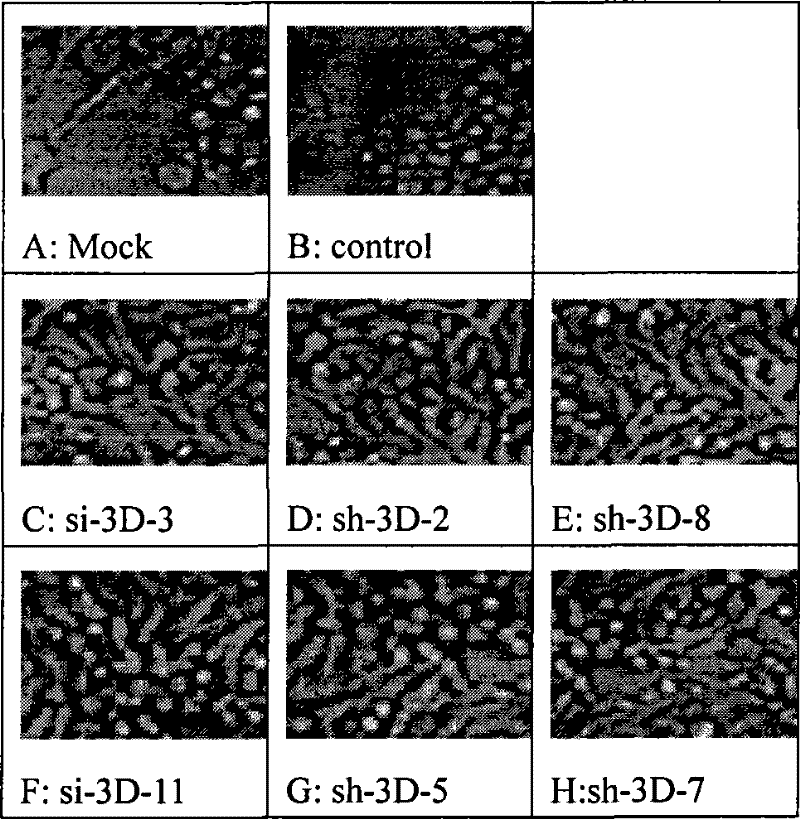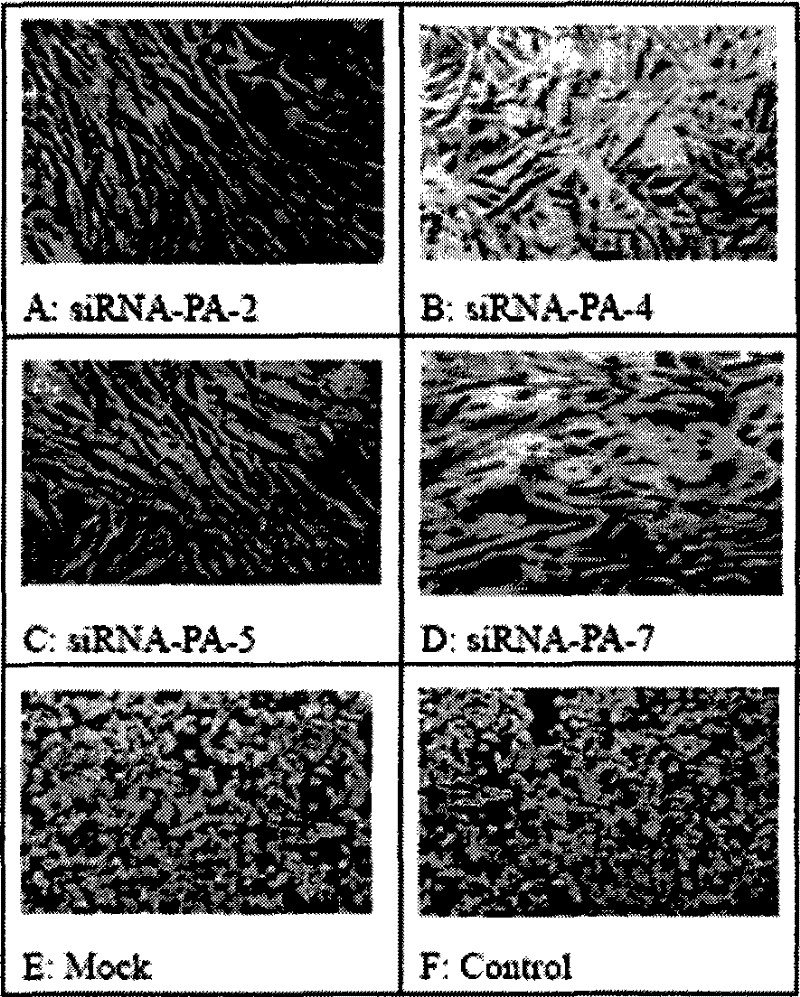Spray containing small molecule disturbance ribonucleic acid
A molecular ribonucleic acid, small molecule interference technology, applied in the field of bioengineering technology, can solve the problems of increasing siRNA concentration, reducing bioavailability, and high cost
- Summary
- Abstract
- Description
- Claims
- Application Information
AI Technical Summary
Problems solved by technology
Method used
Image
Examples
Embodiment 1
[0070] Embodiment 1 Materials and methods
[0071] 1. Experimental materials
[0072] Recipient cell lines: baby mouse kidney cell line (BHK-21) and canine kidney cell line (MDCK) (purchased from Shanghai Kunken Biochemical Co., Ltd., product numbers are QK10311, QK10124 respectively);
[0073] Virus isolates: FMDV (foot-and-mouth disease virus), FMO (subtype O), FMA (subtype A), FMAsia (subtype Asia). Influenza virus (influenza virus) InfA (subtype A) (purchased from American Type Culture Collection (ATCC), preservation number is ATCC VR-1331)
[0074] Liposome: cholesterol 10%, lecithin 35%, phosphatidylethanolamine 35%, phosphatidylserine 10%, phosphoinositide 4,5 bisphosphate (PtdIns(4,5)P2) 10%.
[0075] Primers for Q-RE-PCR:
[0076] Forward primer for amplification of FMDV3D: 5'ACACCAGAGATGTGGAAG3'
[0077] Reverse primer for amplification of FMDV3D: 5'GACGGCATTCCGCCTTCAAC3'
[0078] For the amplification of influenza virus PA reverse primer: 5'GAAGGAAGAGACCGAGCAAT...
Embodiment 2
[0093] Embodiment 2 silencing effect
[0094] 1. Hysteresis and reduction of cytopathic effect (CPE)
[0095] The cells in this example are all fibroblasts, growing in a single layer and arranged regularly. After virus infection, it causes a significant cytopathic effect (CPE), and total cell detachment, suspension, and destruction can be observed by microscopy.
[0096] Baby mouse kidney cell line (BHK-21) has been widely used in the diagnosis of FMDV and virus identification. The MDCK cell line is used for viral immunization against influenza virus.
[0097] In order to study the effect of siRNA / shRNA silencing on virus infection, 100 TCID50 of FMDV FMO, FMA, and FMAsia subtypes were used to infect transfected BHK-21 cells (24 hours after transfection), and the multiplicity of infection (MOI) was 0.01 InfA virus strain to infect transfected MDCK cells (18 hours after transfection).
[0098] figure 1 , 2 3 and 3 are photographs taken of representative clear regions obse...
Embodiment 3
[0141] Embodiment 3 virus titer reduces
[0142] In this example, four kinds of viruses were used to infect cells and the amount of virus was collected 12, 24, and 48 hours after transfection to further confirm the antiviral activity.
[0143] In order to determine whether there are differences in the silencing effects of small interfering RNAs on different subtypes of FMDV, this example uses the same small interfering RNA to detect its silencing effects on three subtypes of O, A, and Asia I. BHK-21 cells were transiently transfected with blank transfection and small interfering RNA (2.5nmol), and then according to the method in Example 1, 100TCID were added 50 / 0.1ml of FMDV FMO, FMA and FMAsia (Asia I subtype) for infection. Studies have shown that the virus production in BHK-21 cells transfected with small interfering RNA is significantly reduced from the beginning of infection until 48 hours after infection. Therefore, small interfering RNAs have silencing effects on dif...
PUM
 Login to View More
Login to View More Abstract
Description
Claims
Application Information
 Login to View More
Login to View More - R&D
- Intellectual Property
- Life Sciences
- Materials
- Tech Scout
- Unparalleled Data Quality
- Higher Quality Content
- 60% Fewer Hallucinations
Browse by: Latest US Patents, China's latest patents, Technical Efficacy Thesaurus, Application Domain, Technology Topic, Popular Technical Reports.
© 2025 PatSnap. All rights reserved.Legal|Privacy policy|Modern Slavery Act Transparency Statement|Sitemap|About US| Contact US: help@patsnap.com



